20 beautiful forests around the world that show the power of Mother Nature
Zoë Miller,Frank Olito

- Forests cover nearly a third of the Earth's land surface, and each one is different.
- The Dragon's Blood Forest in Yemen is like an alien landscape.
- Hawaii's Rainbow Eucalyptus Forest is nothing short of magical.
Forests cover 31% of the Earth's land surface, and there are three distinct types: tropical, temperate, and boreal (taiga).
From the otherworldly Dragon's Blood Forest in Yemen to Hawaii's magical Rainbow Eucalyptus Forest, these vastly different woods showcase the world's unique beauty in singular ways.
Keep scrolling to see 20 of the world's most beautiful forests.
Read the original article on InsiderThe beauty of the Amazon Rainforest covers multiple countries and is considered the world's largest tropical rainforest.
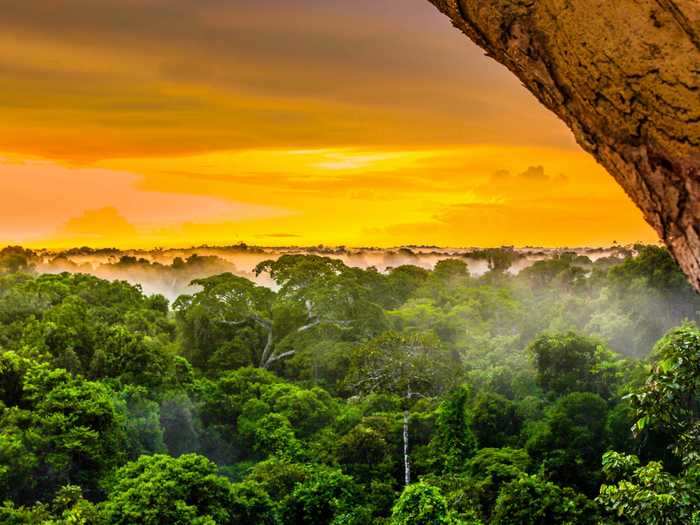
The Amazon is 1.4 billion acres of forests and reaches countries like Peru, Bolivia, Brazil, Venezuela, and Colombia. Within this dense forest, there are 4,100 miles of rivers. But the rainforest isn't just a natural beauty, it's also important to the health of the entire planet. According to World Wildlife, "The rain forests, which contain 90-140 billion metric tons of carbon, help stabilize local and global climate."
The bright blue water at Tha Pom Khlong Song Nam in Thailand is mesmerizing.
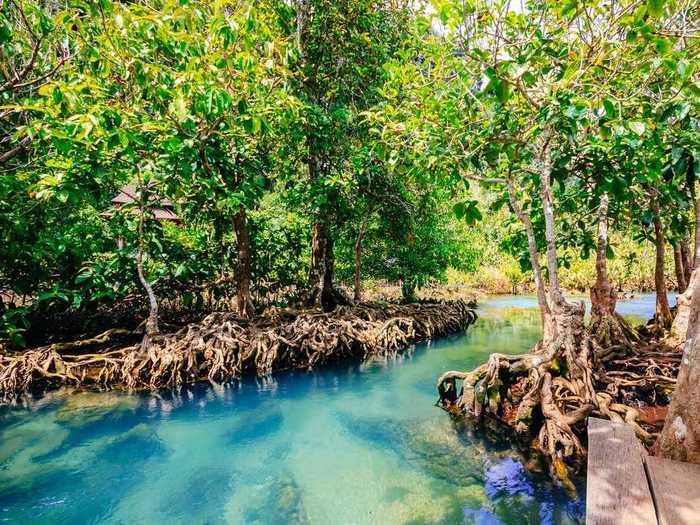
The name Tha Pom Khlong Song Nam means "two-water canal." This ecological center is known for its magnificent mangrove trees as well as its shockingly blue water — a color that occurs when seawater mingles with freshwater at certain points in the tide cycle.
Tsingy de Bemaraha Strict Nature Reserve in Madagascar is known for its rocky landscape.
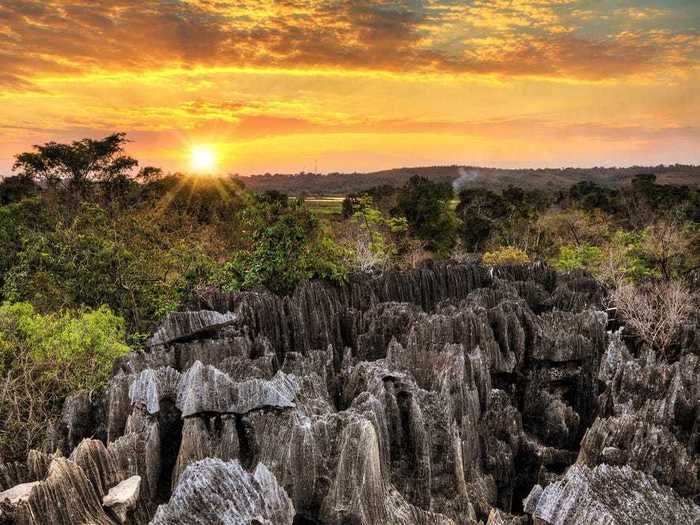
Tsingy, Madagascar's "stone forest," offers one of the most unique landscapes in the world — rugged terrain characterized by karst formations, porous limestone that was carved over time by rainfall.
A UNESCO World Heritage site, Tsingy is also home to a number of rare and threatened animals, including 11 lemur species and several species endemic only to the reserve, such as the lowland red forest rat.
Dragon's Blood Forest in Socotra, Yemen, is one of the most unique forests in the world.
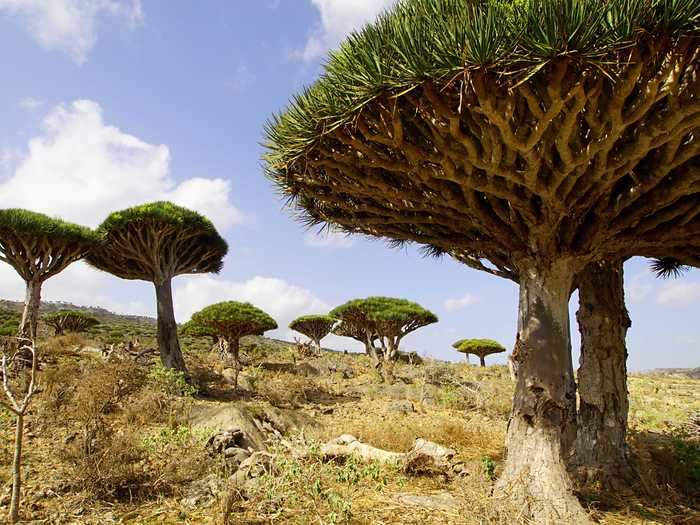
At first glance, you might mistake Yemen's Dragon's Blood Forest, located on the islands of the Socotra archipelago, which became separated from mainland Arabia 34 million years ago, for an extraterrestrial landscape. In fact, 37% of Socotra's flora are not found anywhere else in the world.
The Sagano Bamboo Forest in Kyoto, Japan, is especially beautiful when the sun filters through the stalks.

In Kyoto's Arashiyama district, you'll find one of the most unique forests in the world: the Sagano Bamboo Forest.
As you can imagine, the grove is a tranquil site — so peaceful, in fact, that Japan's environmental ministry included the forest on its list of "100 Soundscapes of Japan," a compendium of the country's most significant natural, cultural, and industrial noises.
A cloud-like mist gives the Monteverde Cloud Forest in Costa Rica its name.
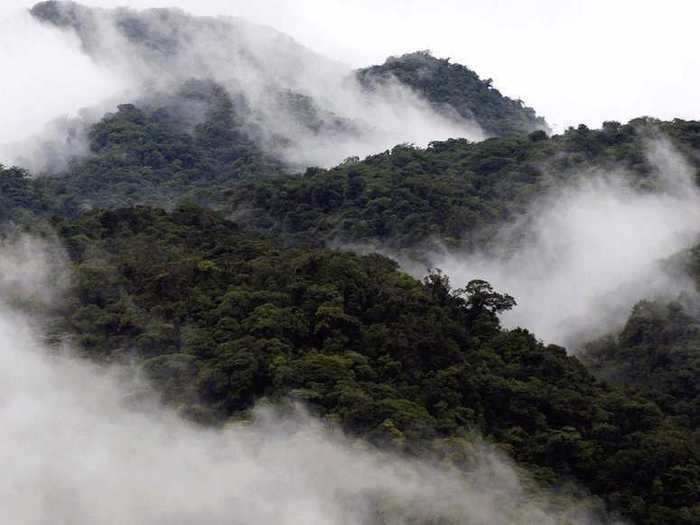
In Costa Rica, you'll find the Monteverde Cloud Forest. A cloud forest is a tropical forest with a high elevation that makes for a misty environment — it's one of Earth's rarest habitats.
This mesmerizing, 26,000-acre forest is home to several thousand species of plants and animals, including 500 bird species alone. You might also spot monkeys, pumas, and Costa Rica's famous red-eyed tree frog.
The Olympic National Forest in Washington, United States, is a tranquil shade of green.

Exceeding 600,000 acres, the Olympic National Forest — located on Washington State's Olympic Peninsula — encompasses a variety of landscapes, from temperate rainforest to rugged mountains to coastal beaches.
One of four rainforests in the peninsula, the Hoh Rainforest — which gets between 12 and 14 feet of precipitation a year — is known for its gorgeous mossy terrain. You'll also find moss hanging from the forest's Sitka spruce and western hemlock trees (the latter is Washington's state tree).
The ethereal landscape of the Otzarreta Forest, in Basque Country, Spain, is really something to marvel at.
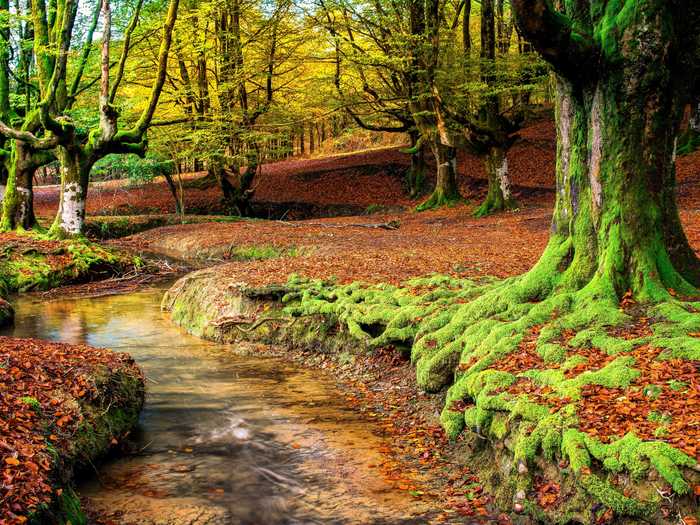
Gorbeia Natural Park in Spain's Basque Country is known for its ethereal forests, like Hayedo de Otzaretta ("hayedo" is Spanish for "beech tree"). The park takes its name from the titular peak that Basque mountaineers use as a reference point when they're climbing the hills.
Taman Negara in Malaysia is one of the oldest rainforests in the world.
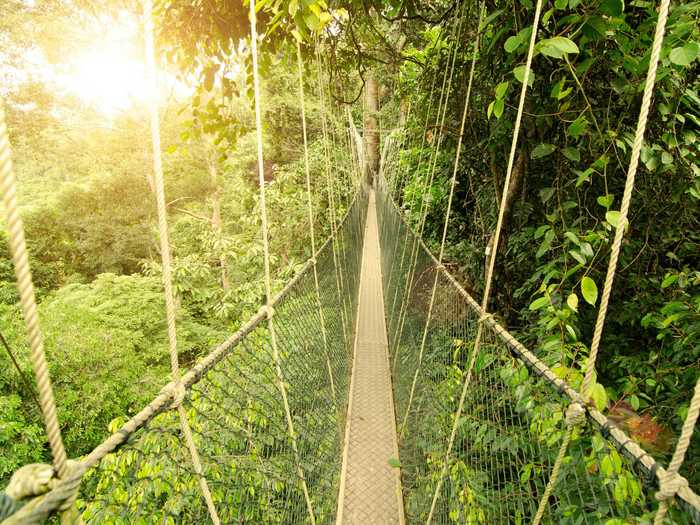
This forest is a whopping 130 million years old. Its 45-mile-high canopy walkway offers sweeping views of the forest. You can also trek through the trees on foot or observe the scenery aboard a river cruise.
The trees of the Rainbow Eucalyptus Forest in Hawaii look like they were painted in virbant colors.
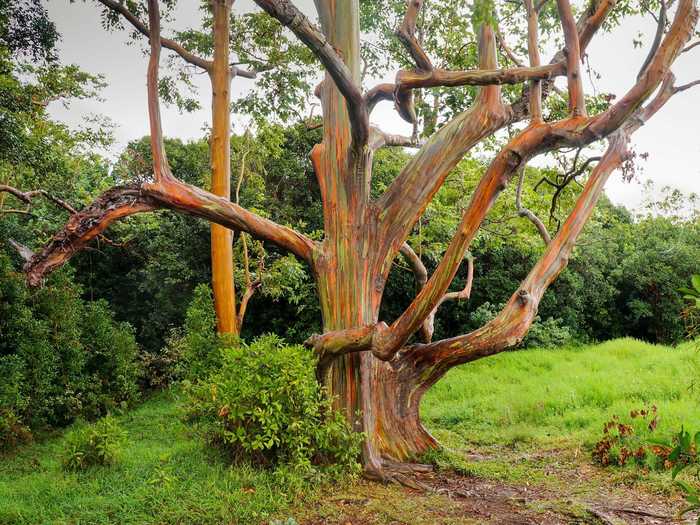
Native to the Philippines, rainbow eucalyptus trees can be identified by their eye-catching bark that looks like it's been painted. The tree's inner bark layer revealed when the outer layer peels away, is a vibrant green that fades over time to produce a magical range of bright colors.
The Black Forest in Germany inspired the dark tales of the Brothers Grimm.
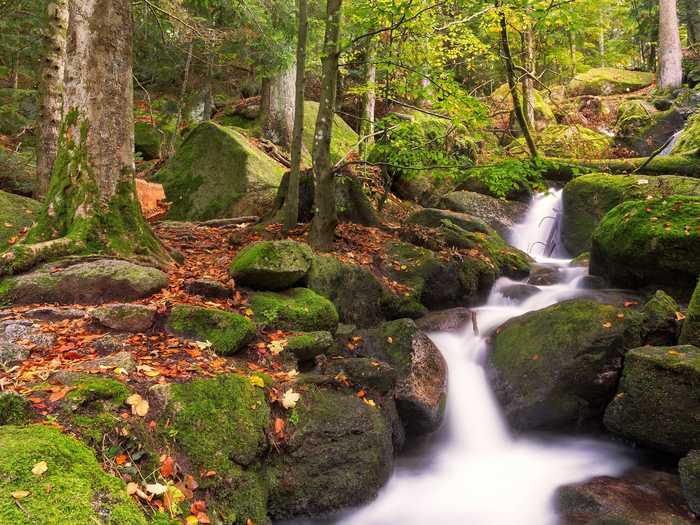
Germany's Black Forest is named for its impressively dense canopy of conifers. The forest itself may be dimly lit, but the broader Baden-Württemberg region, the birthplace of the cuckoo clock, is full of charming spa towns and resorts, such as Baden-Baden and Baiersbronn.
The trees in Sequoia National Forest in California are some of the world's biggest.
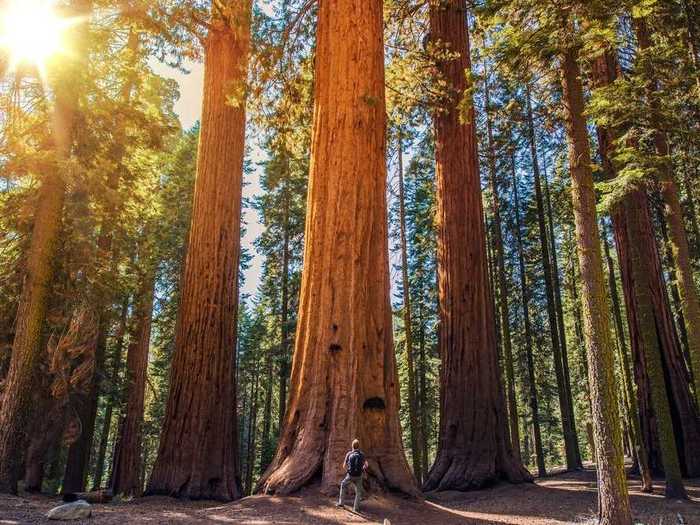
The Sequoia National Forest is also known as the "land of the giants" because of its towering trees. At 103 feet wide and 275 feet tall, the General Sherman tree (named for Civil War general William Tecumseh Sherman) is a giant among giants. It has been alive for an estimated 2,200 years. The sixth-largest giant sequoia, with a diameter of 35 feet and a height of 269 feet, is the 2,000-year-old Boole tree, which was named for the Fresno doctor who spared its life during a logging operation.
The Hallerbos Forest in Belgium is famous for its bluebell flowers that carpet its floor each spring.
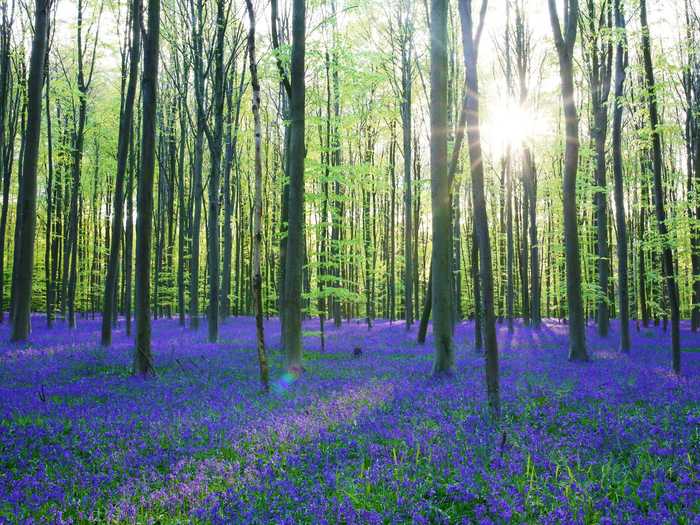
Another fairytale-esque forest is the Hallerbos Forest in Belgium. Known as "the blue forest," Hallerbos is one of the last remnants of the Silva Carbonaria ("charcoal forest"), an ancient forest whose beech and oak trees formed a natural boundary between the West Frankish kingdom of Clovis and the East Frankish kingdom of Sigebert the Lame well into the Early Middle Ages.
The strange-looking trees in the Crooked Forest in Poland give this landscape its name.
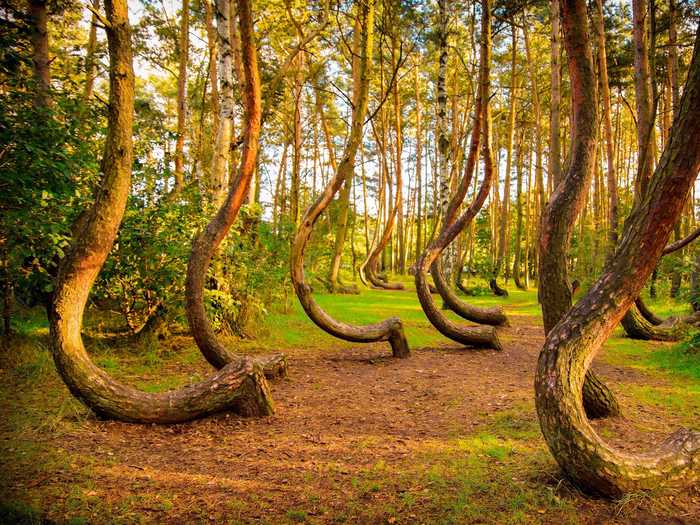
One of the world's most mysterious forests is the Crooked Forest (Krzywy Las) in Poland, whose 400 pine trees have a 90-degree bend at their base. Theories for how the trees got their unusual shape vary. Some posit that gravitational changes in the region caused the bending, while others attribute the crookedness to heavy snow that flattened the trees over time. Another, less likely explanation is that their shape was altered by hand.
The Sundarbans in India are home to the world's largest continuous mangrove forest.
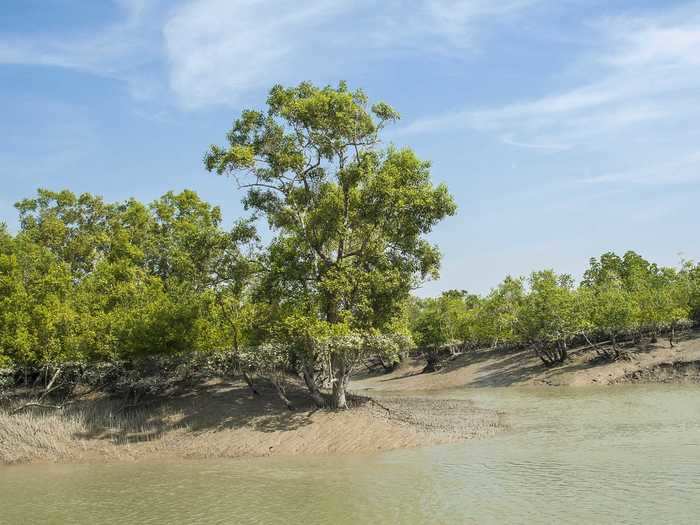
The Sundarbans, a group of low-lying islands in the Bay of Bengal, are home to the world's largest continuous mangrove forest, which spans 140,000 hectares (about 540 miles). As the site of three wildlife sanctuaries, the forest has been designated a UNESCO World Heritage Site.
Tijuca National Park in Rio de Janeiro, Brazil, is home to some of the most incredible views in the world.
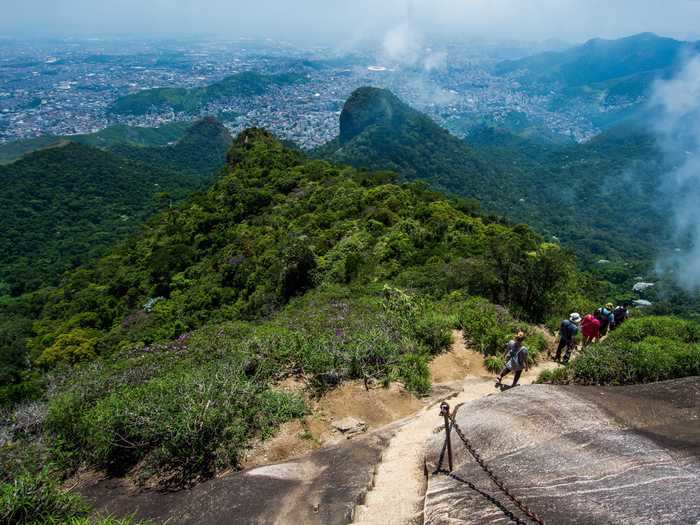
Beneath the gaze of Rio de Janeiro's iconic Christ the Redeemer statue — which towers over the city atop Corcovado Mountain — you'll find Tijuca National Park, one of the largest urban rainforests on the planet. Between its 30 waterfalls and famous mountain peaks (including Pedra Bonita, Pedra da Gavea and Pico da Tijuca), there's no shortage of incredible sights.
Surprisingly, for such a lush forest, Tijuca is actually manmade. The land was once part of the Atlantic Rainforest, but was cut down and redeveloped by industrialists. In the 19th century, trees were replanted to protect the city's water supply.
The Great Trossachs Forest National Nature Reserve in Scotland, United Kingdom, is breathtaking.
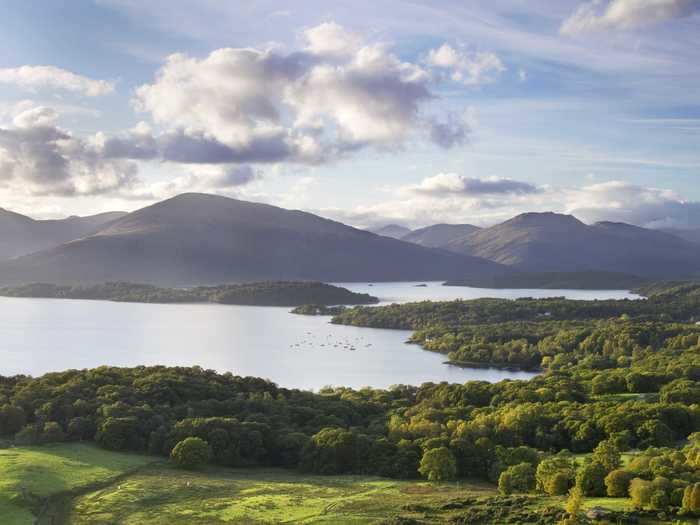
Scotland's Great Trossachs Forest, situated along the bonnie banks of Loch Lomond, is a "forest in the making" — there's a wide-scale conservation effort to preserve the trees of the ruggedly beautiful Trossachs glen.
Types of species native to the region include conifers, broadleaves, and Atlantic oakwoods.
The Great Bear Rainforest in Canada is part of the world's largest temperate rainforest.
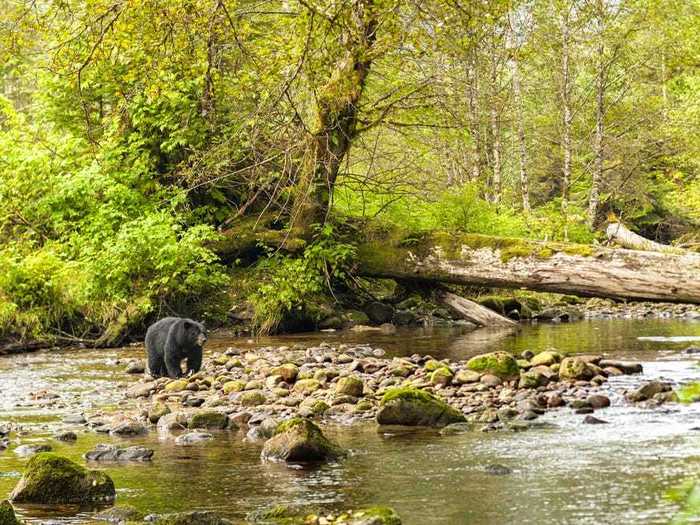
Canada's Great Bear Rainforest — the sole habitat of the white-furred Kermode bear, a subspecies of black bear — is part of the world's largest coastal temperate rainforest. Some of its most stunning natural features include fjords, granite cliffs, and glacier-capped mountains.
Thanks to a conservation agreement signed in 2016 between First Nations and the British Columbia government, the forest's protected land has been expanded to 19 million acres.
You can find some of the most beautiful fruit trees in the Yili Apricot Valley in China.
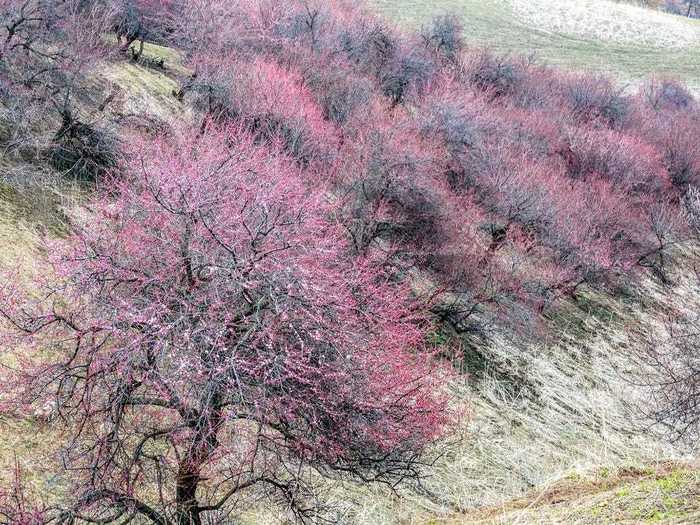
At approximately 5,000 acres, the Yili Apricot Valley in Xinyuan County, China, is an oasis dotted with flowering fruit trees. To see the valley in bloom, visit in April — that's when the apricot trees blossom with whimsical pink flowers.
Rātā Forest in Auckland Islands, New Zealand, is characterized by dark green leaves and gnarled, twisted trunks.
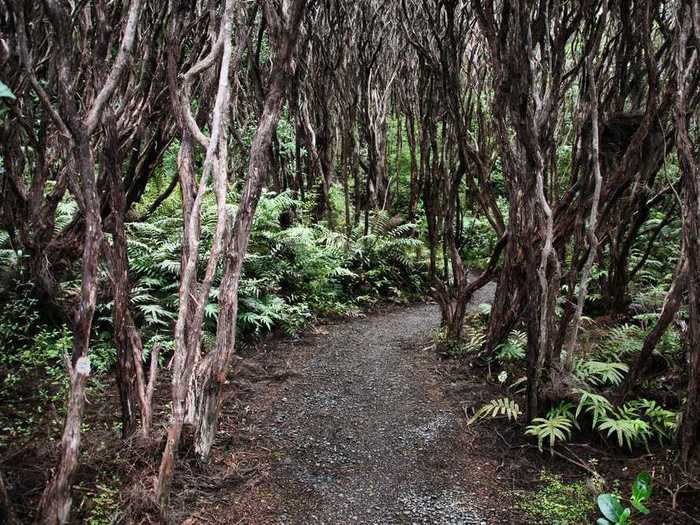
The rātā, a type of myrtle tree, is native to New Zealand. The dark and twisted trees are found on the North Island plays a vital role in bird ecology. They rarely exceed a height of 65.5 feet, and produce stunning red flowers around Christmas time.
READ MORE ARTICLES ON
Popular Right Now
Popular Keywords
Advertisement